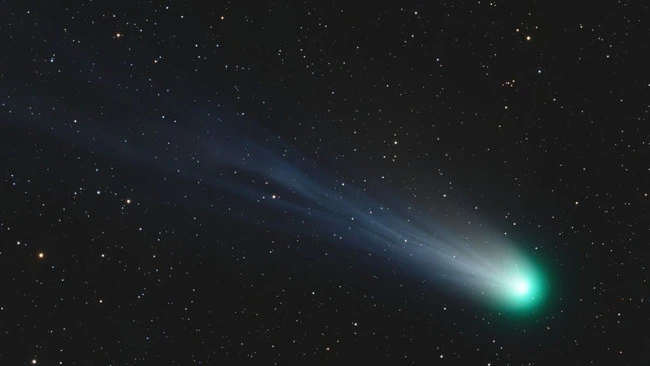The Devil Comet will be visible in Australian skies in just days – for the first time in 70 years.
Comet 12/P Pons-Brooks, also known as the “Mother of Dragons” due to its resemblance to a horned tail, is set to first occur in the early hours of April 22.
Most stargazers in Australia will be able to view the comet without equipment before sunrise, but only for a brief period of time.
The rare celestial event is a result of cryo-volcanic eruptions of ice and is compared to the size of Mount Everest.
As the ice heats up from the sun, it sublimates into a gas, which produces the “fuzzy green haze” that appears across the night sky, explained astrophysicist Brad Tucker from the Australian National University.
“It’s similar to a Halley’s comet…as the comet goes around and gets closer around the sun, the ice heats up and turns to a gas, that’s the tail we see,” he told.

“In the case of this one, it kind of goes through a cryo-volcano – an ice volcano – so you sometimes can get a second stream of gas coming off of that and that gives it its horn or devil-like appearance.”
More experienced stargazers have been able to observe the phenomena in the Northern Hemisphere from mid-March with telescopes.
But as the comet moves closer to the sun it will become visible across Southern skies from mid-April.
Tucker said Australians would have the best chance of catching a glimpse of the comet from Anzac Day for around a week or two.
“It will be low in the western skies in its early days, you want a nice clear view to the West, so as the sunsets in the West you want a nice clear view with no buildings around,” he said.
“If it’s a fairly clear view to the horizon you should get a fairly good sight.”
Tucker advised a pair of binoculars or a telescope will make for the optimum viewing experience.
The comet will eventually become fainter and impossible to see with the naked eye from July as it reaches its closest point to Earth in June.

Source: 9News


